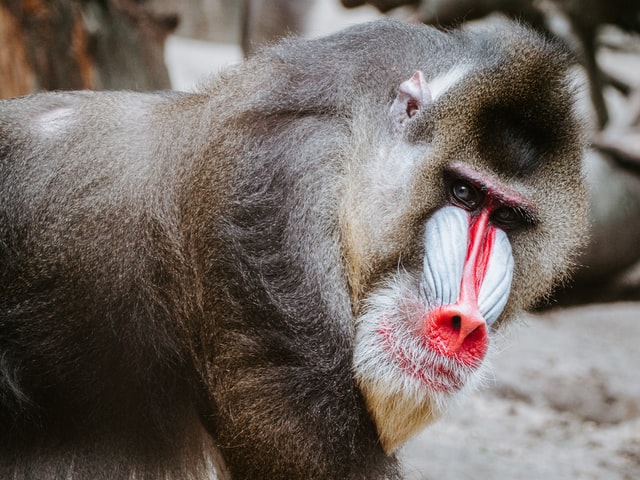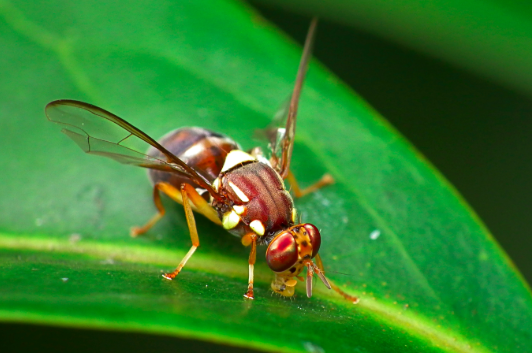In search of an animal model more comparable to the human brain, Alzheimer’s researchers are turning from mice to monkeys.
Animal testing remains controversial, but for some of the world’s most prevalent and hardest-to-cure diseases, they play a critical and life-saving role in research. When it comes to Alzheimer’s, mice and other rodents as test subjects have propelled our understanding of the disease. But, more than 25 years have passed since one of the earliest genetically modified mouse models of Alzheimer’s was first described, and still, the U.S. Food and Drug Administration has yet to approve a disease-modifying drug to treat the disease. In part, this is because scientists have struggled to carry promising findings from the lab to actual human trials. Between the mouse brain and the human brain, often, something is lost in translation.
Researchers suspect that there may be better options for testing Alzheimer’s treatments in their early stages, especially considering the evidence showing that, similar to humans, some animals — including dolphins, chimpanzees and baboons — experience age-related cognitive decline and signs of Alzheimer’s like beta-amyloid plaques and damaged neurons. So, now, scientists are developing a different approach to test potential Alzheimer’s treatments before they enter clinical trials. This one involves monkeys — and more specifically, the rhesus macaque, a relative of the baboon native to Asia.
In a recent study published in Alzheimer’s & Dementia, researchers explained how they injected human genetic mutations that cause the misfolding of tau proteins, like those found in human brains with Alzheimer’s, into the brains of four middle-aged rhesus monkeys, aiming to develop a model to potential Alzheimer’s treatments. Danielle Beckman, lead author of the study and postdoctoral researcher at the California National Primate Research Center, hopes this nonhuman primate model could close the chasm between rodent and human studies and improve the success rate of clinical trials — an urgent need amid the growing prevalence of Alzheimer’s.
“People are getting older, living longer,” Beckman told Being Patient. “More people are having Alzheimer’s and we don’t see the findings that are being discovered in rodents being translated to patients. It’s very frustrating to not see new therapies.”
She finds some optimism, however, in the possibility that monkeys could serve as “a bridge between the rodent and human studies,” she said. “That’s what we hope for before spending millions, billions of dollars in clinical trials.”
According to CNPRC Director John Morrison, senior author of the study, while animals like rodents are powerful models to understand the biological pathways associated with Alzheimer’s, rhesus monkeys are much closer to humans in terms of their genetics, physiology, anatomy and biochemistry. Humans and rhesus monkeys have two forms of tau proteins — each with subtle biochemical differences — whereas adult rodents only have one form.
In addition, brain regions critical for cognition and vulnerable to Alzheimer’s are far more complex in rhesus monkeys than in rodents.
“High-level cognition involves lots of cortical regions that work in concert with each other and have very complicated connections between them,” Morrison said. “It’s that set of regions and their connections that are not very well-developed in the mouse and are highly-developed in the rhesus macaque and of course, the human.”
After the injections, the team observed misfolding of both human and monkey tau proteins into tangles within three months. The tangles then spread through into the hippocampus and neocortex as it does in the human brain. Accompanying the spread of tau pathology was inflammation in the rhesus monkeys’ brains, which also happens in human brains. While third-party researchers believe it is too early to say whether tau pathology in this model mirrors human Alzheimer’s, the research team says that so far, the data suggests the injection did produce some characteristics similar to human Alzheimer’s: Based on the findings, Beckman said, the model could potentially be used to represent mid-stage Alzheimer’s.
Do Monkeys Get Alzheimer’s?
Amy Arnsten, professor of neuroscience and psychology at Yale University, who was not involved in the study, said rhesus monkeys are good models for studying late-onset Alzheimer’s, the most common form of the disease.
There are a couple drawbacks: For example, while to date it has not been clear whether rhesus monkeys naturally develop tau tangles as seen in human brains, Arnsten’s research has shown that rhesus monkeys of extreme old age do in fact exhibit tau pathology in their brains, but she said very few of them reach such advanced age. That limits its practical value for testing potential therapies.
Plus, tau and amyloid pathologies in the nonhuman primates are nowhere near as widespread as humans, and cognitive impairment observed in aged rhesus monkeys is not as severe as dementia.
However, Arnsten said speeding up the development of tau pathology may help solve for some of these differences.
“What [the study results] show so far I think is very encouraging in terms of how the tau pathology is spreading,” Arnsten said. “It is an aspect of the pathology that researchers are very interested in because the idea is if you could keep tau from spreading, you could very much limit how far it goes and how much [of it] there is. So, one could already see ways [the model] could be useful.”
Next Steps For Studying the Rhesus Monkey Model
According to Arnsten, the injected human mutations of tau may eventually lead to brain changes that differ from late-onset Alzheimer’s. So, she said more work is needed to validate the model.
Another key question about the model remains: After the injections of human genetic mutations, will rhesus monkeys eventually develop cognitive deficits that look like those that come along with human dementia?
The researchers are now planning to study changes in memory and cognition of the model and test tau-based therapies. Meanwhile, they are collecting data from a larger number of monkeys and conducting additional tests.



